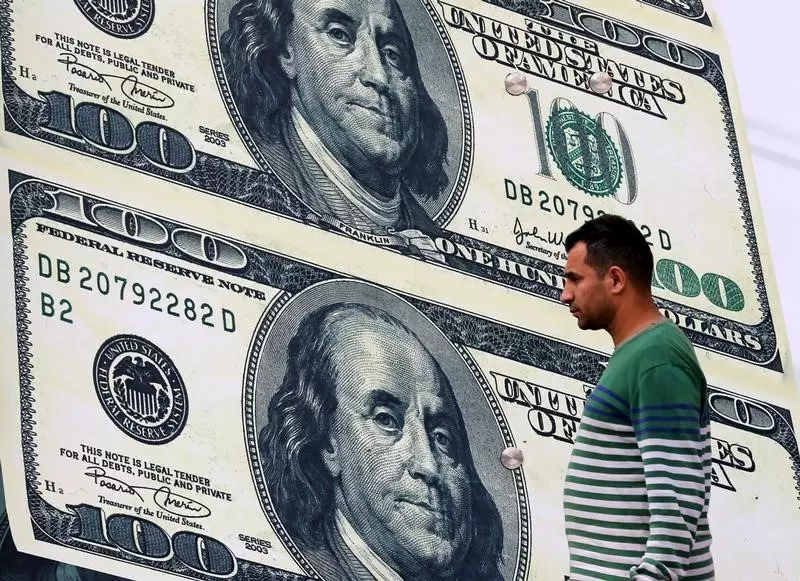The U.S. dollar has shown a slight increase in value, potentially ending a five-week losing streak ahead of the release of important inflation data. The Dollar Index, which tracks the dollar against a basket of other currencies, has seen a 0.1% rise to 101.314. Despite this, the dollar is still expected to experience a drop of about 2.5% in August, marking its worst month since November. This decline is largely attributed to the anticipation of the Federal Reserve implementing a rate-cutting cycle in the near future.
Fed Chair Jerome Powell’s recent statements at the annual Jackson Hole symposium have indicated a shift in policy towards adjusting rates. This has led market participants to anticipate a rate cut at the upcoming policy meeting, the first of its kind in over four years. While there is a consensus on the need for a rate cut, there is still debate surrounding the magnitude of the cut and the pace of future cuts. The release of the Personal Consumption Expenditures price index is expected to provide more clarity on this matter.
In Europe, the EUR/USD pair has seen a slight increase to 1.1092 despite the eurozone consumer inflation data confirming a slowdown in inflation. The European Central Bank’s decision to cut interest rates has been influenced by this deceleration in inflation. Similarly, the GBP/USD pair has gained momentum, with expectations of the Bank of England maintaining high interest rates for a longer duration than the U.S. and the eurozone. The recent rate cuts by the BoE are indicative of the bank’s intention to further lower rates by the end of the year.
In Asia, the USD/JPY pair has stabilized around 145.01, close to its recent lows. Consumer price index data from Tokyo has shown a slight increase in inflation, bringing it closer to the Bank of Japan’s annual target of 2%. This positive inflation trend is expected to provide the BOJ with more flexibility to raise interest rates in the future. Furthermore, the USD/CNY pair has experienced a slight decline to 7.0907, reaching its lowest level since late December. This movement is linked to Beijing’s plans to refinance $5.4 trillion of mortgages, revitalizing the Chinese property market amid economic challenges.
The currency markets are heavily influenced by key economic data releases and central bank policies. The recent trends in inflation, interest rates, and economic growth have shaped the trajectory of major currency pairs. As investors navigate through these uncertainties, staying informed and agile in response to changing market dynamics is crucial for successful currency trading.

